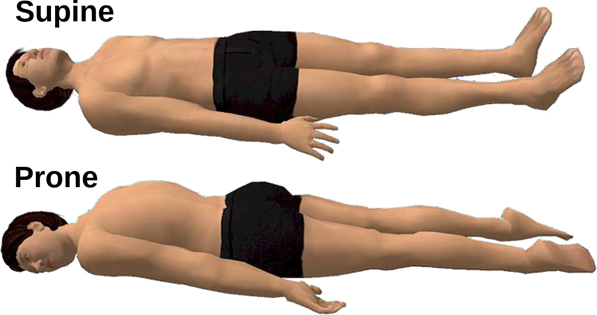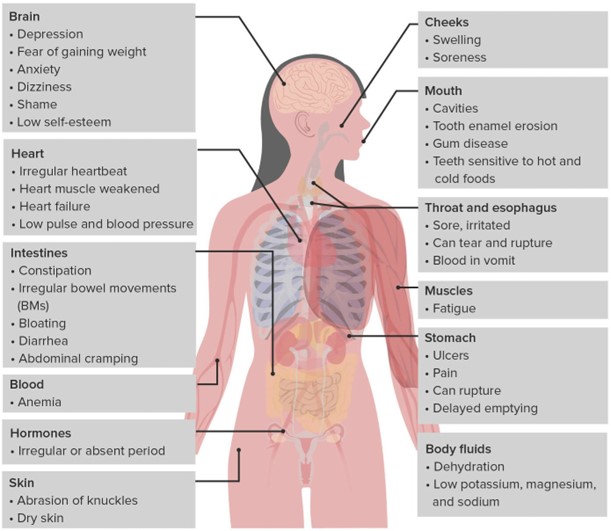A nurse is helping to place a client into the prone position.
The nurse should use a small pillow to relieve pressure from which of the following areas of the client's body?
Heels
Coccyx
Occiput
Breasts
The Correct Answer is D

Nursing Test Bank
Naxlex Comprehensive Predictor Exams
Related Questions
Correct Answer is A
Explanation
Observing the client during and after meals is crucial for monitoring their eating behaviors, identifying any signs of bingeing or purging, and assessing their overall progress in managing their eating disorder. By closely observing the client, the nurse can provide immediate support and intervention if necessary and help prevent or address any potentially harmful behaviors. Instructing the client about effective coping strategies is valuable in helping them develop healthier ways to manage stress and emotions. However, this instruction can be more effective once the nurse has observed the client's behaviors and identified specific areas where coping strategies are needed.
Suggesting that the client assist with meal planning can be a helpful step in empowering them to take ownership of their eating habits and make healthier choices. However, before involving the client in meal planning, it is important to first assess their current eating behaviors and address any immediate concerns or risks.
Referring the client to a support group for individuals with eating disorders is a beneficial step in providing ongoing support and community. However, this referral can be made once the nurse has established a baseline understanding of the client's behaviors and needs.

Correct Answer is A
Explanation
Colostrum provides many important antibodies that the newborn lacks.
Colostrum is the thick, yellowish fluid produced by the breasts during the early days after giving birth. It is rich in antibodies, immune factors, and other beneficial components that provide important protection and support for the newborn's health. Colostrum is often referred to as "liquid gold" due to its valuable properties. Antibodies present in colostrum help to strengthen the newborn's immune system and provide protection against various infections and diseases.
These antibodies are especially important during the first few days of life when the newborn's own immune system is still developing.
Option B is incorrect because colostrum does not contain a significant amount of iron. Iron is generally obtained from other sources, such as breast milk or iron-fortified formula, to support the newborn's brain development.
Option C is incorrect because although colostrum contains various essential nutrients, it does not provide a significant amount of vitamin K. Vitamin K is typically given to newborns as a separate supplement to prevent vitamin K deficiency bleeding.
Option D is incorrect because colostrum does not act as a diuretic. Its primary role is to provide the newborn with essential nutrients, antibodies, and immune factors to support their overall health and development.
In summary, colostrum is important for the newborn because it provides valuable antibodies that the newborn lacks, helping to strengthen their immune system and protect against infections and diseases.
Whether you are a student looking to ace your exams or a practicing nurse seeking to enhance your expertise , our nursing education contents will empower you with the confidence and competence to make a difference in the lives of patients and become a respected leader in the healthcare field.
Visit Naxlex, invest in your future and unlock endless possibilities with our unparalleled nursing education contents today
Report Wrong Answer on the Current Question
Do you disagree with the answer? If yes, what is your expected answer? Explain.
Kindly be descriptive with the issue you are facing.
